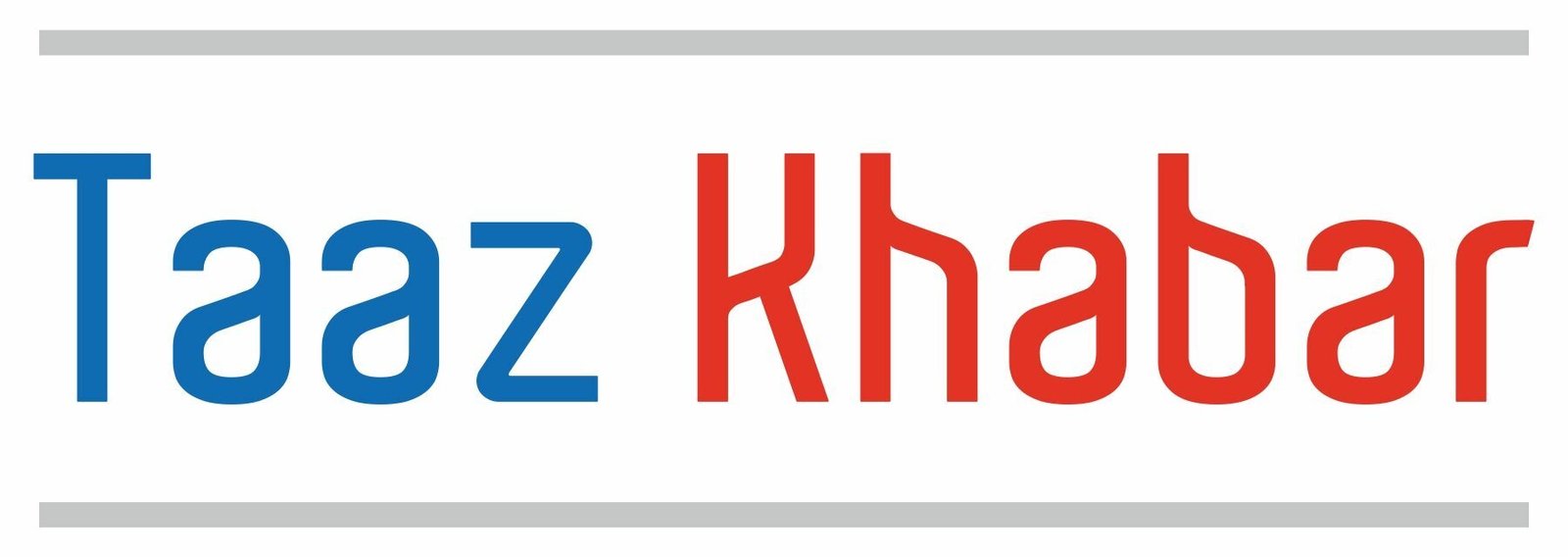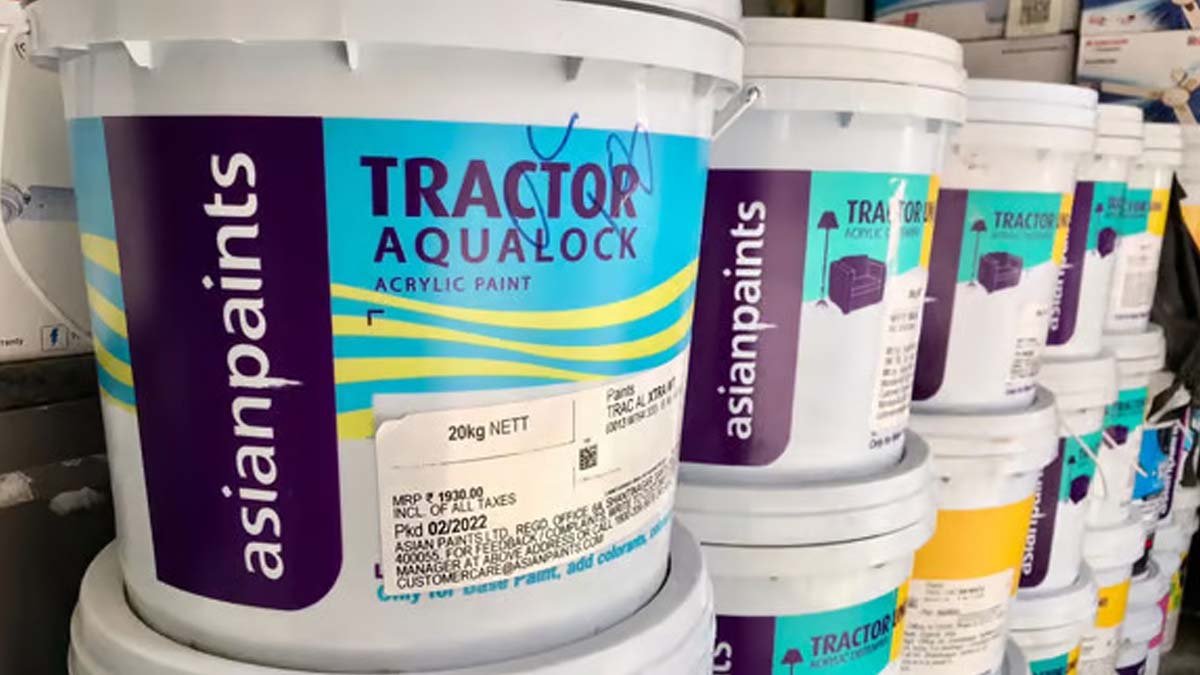Explore the fascinating journey of Asian Paints Share Price as its share price defies market norms, surging an astonishing 250%. Delve into the strategies and insights behind this remarkable achievement in our in-depth analysis.
Analyzing the remarkable rise: Asian Paints Share Price defies market expectations with a 250% surge. Dive into the secrets behind this impressive feat.
Image depicting the title: ‘Unveiling the Secrets: How Asian Paints Share Price Soared Against Market Odds – A Closer Look at the 250% Surge

Table of Contents
Unveiling the Journey: Asian Paints Share Price
I. Introduction
A. Brief Overview of Asian Paints Share Price
B. Significance of Share Price in the Financial Market
II. Understanding Asian Paints Share Price: A Company Profile
A. History and Background
B. Product Portfolio and Market Presence
C. Financial Performance and Growth Trajectory
III. Factors Influencing Asian Paints Share Price
A. Market Trends and Sentiments
B. Industry Performance and Competitor Analysis
C. Macroeconomic Factors
D. Company-Specific News and Developments
IV. Analyzing Asian Paints Share Price Trends
A. Historical Performance Review
B. Technical Analysis Tools and Indicators
C. Fundamental Analysis Metrics
D. Expert Opinions and Analyst Recommendations
V. Impact of External Events on Asian Paints Share Price
A. Global Economic Conditions
B. Government Policies and Regulations
C. Socio-political Factors
D. Environmental and Sustainability Initiatives
VI. Investor Perspective and Strategies
A. Long-Term Investment Potential
B. Short-Term Trading Opportunities
C. Risk Management Techniques
D. Diversification and Portfolio Allocation
VII. Conclusion
A. Recap of Key Points
B. Future Outlook and Prospects
C. Final Thoughts and Recommendations

Introduction
Asian Paints Share Price, a prominent player in the global paint and coatings industry, has been a subject of interest for investors and analysts alike. In this comprehensive exploration, we delve into the dynamics surrounding Asian Paints share price and uncover the factors shaping its trajectory in the financial markets.
A. Brief Overview of Asian Paints Share Price
Asian Paints Share Price stands as a beacon of excellence in the realm of paint and coatings, tracing its roots back to 1942 when it began its journey in Mumbai, India. Over the decades, the company has flourished into a global powerhouse, spreading its vibrant hues across numerous countries. With a relentless pursuit of innovation, quality, and customer satisfaction, Asian Paints Share Price has earned the trust of millions of consumers and accolades from industry experts.
B. Significance of Share Price in the Financial Market
Share price serves as a barometer of a company’s performance and investor sentiment in the financial markets. It reflects the collective wisdom and expectations of investors regarding a company’s future prospects, growth trajectory, and profitability. For companies like Asian Paints Share Price, whose shares are actively traded on stock exchanges, share price movements carry significant implications for various stakeholders, including investors, employees, customers, and the broader economy. Understanding the dynamics driving Asian Paints Share Price share price is essential for investors seeking to make informed decisions and capitalize on market opportunities.
Understanding Asian Paints Share Price: A Company Profile
Asian Paints Share Price, founded in 1942, has evolved into one of the leading paint manufacturers not only in India but also internationally. With a diverse product portfolio ranging from decorative to industrial paints, the company has solidified its market presence through innovation and customer-centric strategies. Its consistent financial performance and steady growth have positioned it as a preferred choice for investors seeking stability and growth potential.
A. History and Background
Asian Paints Share Price journey began in 1942 when four visionaries – Champaklal H. Choksey, Chimanlal N. Choksi, Suryakant C. Dani, and Arvind R. Vakil – laid the foundation of the company in Mumbai, India. Initially, the company operated under the name ‘Asian Oil and Paint Company’ and produced various industrial paints. However, it wasn’t until 1967 that Asian Paints Share Price truly transformed the Indian paint industry by introducing synthetic enamel, a breakthrough that revolutionized the market.
From then on, there was no looking back. Asian Paints Share Price embarked on a path of relentless innovation, expanding its product range, and setting new benchmarks for quality and customer service. Through strategic acquisitions, collaborations, and investments in research and development, the company solidified its position as a market leader not only in India but also on the global stage.
B. Product Portfolio and Market Presence
Asian Paints Share Price boasts a diverse and comprehensive product portfolio that caters to a wide range of consumer needs and preferences. From interior and exterior paints to wood finishes, metal coatings, and waterproofing solutions, the company offers a plethora of choices to adorn homes, offices, and industrial spaces with vibrant colors and durable protection.
With a strong focus on customer-centric innovation, Asian Paints Share Price continually introduces new products and technologies to stay ahead of the curve and meet evolving market demands. Its extensive distribution network ensures widespread availability and accessibility of its products, enabling millions of consumers to experience the magic of Asian Paints.
Internationally, Asian Paints Share Price has established a formidable presence across markets in Asia, the Middle East, Africa, and the South Pacific, leveraging its brand equity, operational excellence, and local market insights to drive growth and capture market share.
C. Financial Performance and Growth Trajectory
Asian Paints Share Price financial performance reflects its unwavering commitment to excellence and value creation for stakeholders. Over the years, the company has consistently delivered robust revenue growth, profitability, and shareholder returns, underscoring its resilience and agility in navigating dynamic market conditions.
With a keen focus on operational efficiency, cost optimization, and strategic investments, Asian Paints Share Price has sustained its growth momentum and expanded its footprint in both domestic and international markets. Its strong balance sheet, prudent financial management, and disciplined capital allocation have earned it the trust and confidence of investors, analysts, and creditors alike.
Looking ahead, Asian Paints Share Price remains poised to capitalize on emerging opportunities, drive innovation, and deliver sustainable value creation for its stakeholders, reaffirming its position as a beacon of excellence in the global paint and coatings industry.
Factors Influencing Asian Paints Share Price
The share price of Asian Paints Share Price is influenced by a myriad of factors, both internal and external. Market trends and sentiments play a crucial role in determining short-term fluctuations, while industry performance and competitor analysis provide insights into the company’s relative positioning. Additionally, macroeconomic factors such as GDP growth, inflation rates, and currency movements impact investor sentiment towards the stock. Moreover, company-specific news and developments, including product launches, acquisitions, and strategic partnerships, can significantly influence the share price in the short term.
A. Market Trends and Sentiments
Market trends and sentiments play a pivotal role in shaping the share price of Asian Paints Share Price. Investor perception, market dynamics, and prevailing trends in the broader stock market can significantly impact the demand for Asian Paints Share Price shares. Positive sentiments, such as bullish market outlooks or favorable investor sentiment towards the paint and coatings industry, often drive up share prices as demand increases. Conversely, negative sentiments, such as economic uncertainty or bearish market sentiments, can exert downward pressure on share prices. Monitoring market trends, sentiment indicators, and investor behavior provides valuable insights into potential price movements and helps investors make informed decisions regarding Asian Paints’ shares.
B. Industry Performance and Competitor Analysis
The performance of the paint and coatings industry and competitive dynamics among industry players directly influence Asian Paints Share Price’ share price. Analysis of industry trends, market share dynamics, and competitive positioning relative to peers helps investors gauge Asian Paints Share Price growth prospects and competitive strength. Factors such as technological advancements, product innovation, pricing strategies, and distribution networks adopted by competitors can impact Asian Paints Share Price market share and profitability. By conducting thorough competitor analysis and staying abreast of industry developments, investors can better assess Asian Paints Share Price competitive advantage and potential risks, thereby influencing share price expectations.
C. Macroeconomic Factors
Macroeconomic factors, including economic growth, inflation rates, interest rates, and currency fluctuations, exert a significant influence on Asian Paints Share Price share price. Economic expansion typically boosts consumer spending and construction activity, driving demand for paints and coatings. Conversely, economic downturns or recessionary pressures may dampen consumer confidence and discretionary spending, impacting Asian Paints’ sales volumes and revenue growth. Additionally, fluctuations in exchange rates can affect the company’s import costs, export revenues, and overall profitability. By monitoring macroeconomic indicators and assessing their potential impact on Asian Paints’ business operations, investors can better anticipate share price movements and adjust their investment strategies accordingly.
D. Company-Specific News and Developments
Company-specific news and developments, ranging from financial performance updates to strategic initiatives and operational milestones, can have a profound impact on Asian Paints’ share price. Positive news, such as strong quarterly earnings results, successful product launches, or strategic acquisitions, often elicit positive investor reactions and drive share prices higher. Conversely, negative news, such as profit warnings, regulatory challenges, or management controversies, can trigger sell-offs and lead to share price declines.
Timely dissemination and analysis of company-specific news and developments enable investors to stay informed about Asian Paints’ business outlook and assess the potential implications for share price performance. Keeping a watchful eye on corporate announcements, regulatory filings, and industry reports facilitates proactive decision-making and risk management strategies in response to changing market dynamics.
Analyzing Asian Paints Share Price Trends
A comprehensive analysis of Asian Paints share price involves a blend of historical performance review, technical analysis tools, fundamental analysis metrics, and expert opinions. By examining historical price patterns and identifying key support and resistance levels, technical analysts can gauge potential price movements. Fundamental analysis metrics such as price-to-earnings ratio, earnings per share, and return on equity provide insights into the company’s financial health and valuation. Furthermore, expert opinions and analyst recommendations offer valuable perspectives on the stock’s outlook and potential catalysts.
A. Historical Performance Review
A thorough historical performance review provides valuable insights into Asian Paints’ share price trends over time. By analyzing historical price data, investors can identify patterns, trends, and key support and resistance levels that may influence future price movements. Examining factors such as past price volatility, trading volumes, and price fluctuations in response to significant events or announcements helps investors understand the stock’s price behavior and potential risk-return dynamics. Additionally, studying historical performance relative to broader market indices and peer group companies offers context for evaluating Asian Paints’ historical relative strength and performance.
B. Technical Analysis Tools and Indicators
Technical analysis tools and indicators play a crucial role in analyzing Asian Paints’ share price trends and identifying potential trading opportunities. Techniques such as chart patterns, trendlines, moving averages, and oscillators enable investors to visually interpret price action and identify patterns indicative of bullish or bearish market sentiment. Additionally, technical indicators such as relative strength index (RSI), moving average convergence divergence (MACD), and Bollinger Bands provide quantitative insights into price momentum, trend strength, and potential reversal points. By incorporating technical analysis into their investment approach, investors can enhance their decision-making process and better time their entry and exit points in Asian Paints’ shares.
C. Fundamental Analysis Metrics
Fundamental analysis metrics offer a comprehensive assessment of Asian Paints’ intrinsic value and financial health, providing investors with insights into the company’s underlying business fundamentals. Key metrics such as earnings per share (EPS), price-to-earnings (P/E) ratio, return on equity (ROE), and debt-to-equity ratio offer insights into profitability, valuation, and financial leverage. Additionally, analyzing Asian Paints’ revenue growth, profit margins, cash flow generation, and market share dynamics enables investors to evaluate the company’s competitive position and growth prospects relative to peers. By conducting fundamental analysis, investors can make informed investment decisions based on a thorough understanding of Asian Paints’ long-term value proposition and growth potential.
D. Expert Opinions and Analyst Recommendations
Expert opinions and analyst recommendations provide valuable insights into Asian Paints’ share price outlook and potential catalysts for future growth. Analysts and industry experts often publish research reports, investment recommendations, and earnings forecasts based on their analysis of company-specific factors, industry trends, and macroeconomic conditions. Monitoring analyst consensus estimates, target price revisions, and qualitative insights from earnings calls and industry conferences helps investors gauge market sentiment and consensus expectations regarding Asian Paints’ performance. Additionally, staying abreast of expert commentary and industry insights enables investors to gain valuable perspectives and incorporate them into their investment thesis for Asian Paints’ shares.
Impact of External Events on Asian Paints Share Price
In addition to internal factors, external events and macroeconomic trends can exert a significant influence on Asian Paints share price. Global economic conditions, such as changes in interest rates, trade tensions, and geopolitical risks, can impact investor confidence and market volatility. Government policies and regulations, especially in the context of environmental regulations and taxation, can affect the company’s operating environment and profitability. Furthermore, socio-political factors and environmental sustainability initiatives are increasingly becoming key considerations for investors evaluating the long-term viability of companies like Asian Paints.
A. Global Economic Conditions
Global economic conditions exert a significant influence on Asian Paints’ share price, as the company operates in a highly interconnected and interdependent global market. Economic indicators such as GDP growth rates, inflation levels, and consumer confidence levels impact overall demand for paints and coatings. During periods of economic expansion, increased construction activity and consumer spending stimulate demand for Asian Paints’ products, driving sales and revenue growth, thus positively affecting the share price.
Conversely, economic downturns or recessionary pressures may dampen demand for paints and coatings, leading to lower sales volumes and revenue, which can negatively impact the company’s share price. Additionally, currency fluctuations and trade tensions in the global economy can affect Asian Paints’ export revenues, production costs, and profitability, further influencing share price dynamics.
B. Government Policies and Regulations
Government policies and regulations play a crucial role in shaping the operating environment for Asian Paints and can have a significant impact on the company’s share price. Regulatory measures related to taxation, environmental compliance, product standards, and trade tariffs can affect the cost structure, profitability, and competitive positioning of Asian Paints. Changes in government policies, such as infrastructure spending initiatives, housing policies, or stimulus packages, can also influence demand for paints and coatings and drive share price movements. Additionally, regulatory developments pertaining to environmental sustainability, health, and safety standards may require Asian Paints to invest in compliance measures or modify its product offerings, impacting costs and profitability, which in turn can affect share price performance.
C. Socio-political Factors
Socio-political factors, including geopolitical tensions, social unrest, and regulatory reforms, can impact Asian Paints’ share price by creating uncertainty and volatility in the market environment. Geopolitical tensions or conflicts in key markets can disrupt supply chains, affect consumer sentiment, and lead to market instability, potentially negatively impacting the company’s sales volumes and revenue growth, thereby influencing share price performance. Social unrest, protests, or labor disputes can disrupt production operations, logistics, and distribution channels, leading to operational challenges and cost pressures for Asian Paints, which can impact profitability and share price dynamics. Furthermore, changes in government leadership, political stability, and policy direction can impact investor confidence and market sentiment, influencing share price movements.
D. Environmental and Sustainability Initiatives
Environmental and sustainability initiatives have emerged as critical factors influencing Asian Paints’ share price, as stakeholders increasingly prioritize environmental responsibility and sustainability practices. Heightened awareness of environmental issues, climate change concerns, and regulatory pressures have prompted companies like Asian Paints to adopt sustainable business practices, including reducing carbon emissions, conserving natural resources, and promoting eco-friendly products. Investments in research and development of sustainable technologies, green manufacturing processes, and environmentally friendly product innovations can enhance Asian Paints’ brand reputation, attract environmentally conscious consumers, and drive sales growth, positively impacting share price performance.
Conversely, failure to adapt to changing environmental regulations or consumer preferences can pose reputational risks and hinder the company’s competitiveness, potentially leading to adverse share price reactions. Therefore, environmental and sustainability initiatives are increasingly becoming key considerations for investors evaluating Asian Paints’ long-term growth prospects and share price potential.
Investor Perspective and Strategies
For investors considering Asian Paints as a potential investment opportunity, it’s essential to adopt a holistic approach that aligns with their investment objectives and risk tolerance. Long-term investors may focus on the company’s strong fundamentals, market leadership, and growth potential, while short-term traders may capitalize on price volatility and momentum opportunities. Risk management techniques such as diversification and portfolio allocation can help mitigate potential downside risks and optimize returns in varying market conditions.
A. Long-Term Investment Potential
Investors eyeing Asian Paints for long-term investment potential are drawn to its strong market position, consistent financial performance, and resilience to economic fluctuations. By focusing on fundamental analysis metrics such as earnings growth, revenue diversification, and competitive advantages, long-term investors assess Asian Paints’ ability to deliver sustained value creation over time. Additionally, considering macroeconomic trends, industry dynamics, and management quality, investors can evaluate Asian Paints’ capacity to capitalize on growth opportunities and navigate challenges in the paint and coatings sector. Long-term investors typically adopt a buy-and-hold approach, seeking to benefit from capital appreciation and dividend income while riding out short-term market fluctuations.
B. Short-Term Trading Opportunities
For investors seeking short-term trading opportunities in Asian Paints’ shares, technical analysis tools and market sentiment indicators play a crucial role in identifying potential entry and exit points. Short-term traders often focus on price volatility, momentum indicators, and short-term price trends to capitalize on short-term price fluctuations and profit from market inefficiencies. By closely monitoring intraday price movements, trading volumes, and news catalysts, short-term traders can execute timely trades and capitalize on short-term price momentum. However, short-term trading entails higher risk due to market volatility and requires disciplined risk management and trading strategies to mitigate potential losses.
C. Risk Management Techniques
Effective risk management is paramount for investors in Asian Paints, regardless of their investment horizon or trading strategy. Risk management techniques such as diversification, position sizing, and stop-loss orders help investors mitigate potential downside risks and protect capital in volatile market conditions. Diversifying across asset classes, sectors, and geographies reduces concentration risk and enhances portfolio resilience against adverse market events. Additionally, implementing stop-loss orders limits potential losses by automatically triggering sell orders when the share price reaches predetermined levels. By incorporating risk management techniques into their investment approach, investors can safeguard their capital and achieve their financial goals while investing in Asian Paints’ shares.
D. Diversification and Portfolio Allocation
Diversification and portfolio allocation are essential considerations for investors incorporating Asian Paints’ shares into their investment portfolios. By diversifying across asset classes, industries, and geographical regions, investors reduce portfolio volatility and enhance risk-adjusted returns. Asian Paints’ shares, typically categorized as equities, offer growth potential and income generation through dividends but carry inherent market risks.
Therefore, investors should allocate an appropriate portion of their investment portfolio to Asian Paints’ shares based on their risk tolerance, investment objectives, and overall portfolio diversification strategy. Moreover, periodically rebalancing the portfolio ensures alignment with changing market conditions and investment goals while optimizing risk-return trade-offs. By adopting a well-diversified portfolio approach, investors can harness the potential benefits of investing in Asian Paints’ shares while managing overall portfolio risk effectively.
Conclusion
In conclusion, the journey of Asian Paints share price is shaped by a multitude of factors, ranging from internal business dynamics to external macroeconomic trends. By understanding these factors and adopting a prudent investment strategy, investors can navigate the complexities of the financial markets and potentially capitalize on the growth opportunities presented by companies like Asian Paints.
A. Recap of Key Points
Throughout this exploration of Asian Paints’ share price dynamics, we’ve uncovered various factors that influence its performance in the financial markets. From understanding the company’s history and market presence to analyzing external events and investor perspectives, we’ve gained valuable insights into the complexities surrounding Asian Paints’ share price.
B. Future Outlook and Prospects
Looking ahead, Asian Paints appears poised to continue its trajectory of growth and value creation. With a strong track record of innovation, operational excellence, and market leadership, the company is well-positioned to capitalize on emerging opportunities in the paint and coatings industry. Additionally, its commitment to sustainability and environmental initiatives aligns with evolving consumer preferences and regulatory trends, further enhancing its long-term prospects for success.
C. Final Thoughts and Recommendations
In conclusion, Asian Paints’ share price reflects a culmination of internal and external factors, market sentiments, and investor perceptions. For investors considering Asian Paints as an investment opportunity, it’s essential to conduct thorough research, understand the company’s fundamentals, and assess its growth potential. Whether pursuing long-term investment objectives or exploring short-term trading opportunities, investors should adopt a disciplined approach, incorporating risk management techniques and diversification strategies to mitigate potential downside risks and optimize returns. Ultimately, Asian Paints’ journey in the financial markets is a testament to its resilience, innovation, and commitment to creating long-term value for stakeholders.
This content provides a structured approach to understanding Asian Paints share price dynamics, offering insights into the company’s business profile, factors influencing share price movements, analytical techniques, and investor strategies.
Asian Paints Shares Price
Asian Paints Shares Drop Following Birla Opus Launch for the Second Day in a Row
The stock’s rating was dropped by CLSA from “underperform” to “sell,” and the target price was lowered to Rs 2,425 a share.

Monday saw a nine-month low for Asian Paints Ltd.’s shares, which had dropped for the second straight day following the introduction of Grasim Industries Ltd.’s paint brand, Birla Opus.
The stock has divided analysts. Although it may hold onto its long-term market position, CLSA downgraded the stock from ‘underperform’ to’sell’ because it anticipates that near-term growth and profitability will be vulnerable to this competitive pressure.
Additionally, the brokerage lowered its target price for the stock from Rs 3,215 to Rs 2,425 per share, which indicates a 15.62% decline from the current market price.
Macquarie has kept its rating of “overperform” on the company, indicating a 39.17% gain to the target price of Rs 4,000 per share. A newcomer such as Grasim won’t have as much of an impact on Asian Paints, the brokerage claims.

Asian Paints’ stock plummeted to 4.63%—the lowest since April 28, 2023—before somewhat recovering to close 4.01% lower at 10:20 a.m. This is in contrast to the NSE Nifty 50 declining by 0.35%. The stock has dropped 5% since Thursday’s closing.
In the past 12 months, the stock has increased by 1.3%. The day’s total traded volume was 1.13 times higher than the 30-day average. The indicator of relative strength stood at 29.53.
Based on Bloomberg statistics, out of the 37 analysts that follow the firm, nine have a “buy” rating, 12 recommend “hold,” and 16 recommend “sell.” 13.4% is implied by the average 12-month analysts’ price estimate.
After the launch of Birla Opus, paint shares lose luster; Asian Paints is at a 10-month low.
On Monday, Asian Paints saw intraday deals drop by 5%. The following paint companies saw decreases: Shalimar Paints, Kansai Nerolac, Berger Paints, Indigo Paints, and Sirca Paints.

Concerns that Grasim’s foray into the paint industry may increase competition caused paint company shares to drop as much as 5% on the BSE during intraday trading on Monday.
A 10-month low of Rs 2,850 was reached by Asian Paints shares, which fell over 5% after the brokerage CLSA downgraded the stock following the introduction of Birla Opus. The paint manufacturer’s stock fell down to its lowest level since April 28, 2023.
Asian Paints was down 4% at Rs 2,873.35, at 09:56 am, while the S&P had declined by 0.33%.
Asian Paints Stocks Drop 4% As Analysts and Investors Grow Wary Following Birla’s Entry

The share price of Benzinga – Asian Paints (NS:ASPN) fell precipitously on Monday morning, plunging almost 4.5% to reach an intraday low of ₹2,847.80.
What Happened: The decline today is a result of investors and analysts in Asian Paints being uneasy about the Aditya Birla Group’s foray into the paint industry. The stock rating was reduced from “buy” to “sell” by international brokerage CLSA, which cited increasing pressure from competitors. Additionally, the firm cut its price estimate from ₹3,215 to ₹2,425; this suggests a possible 19% decline from Friday’s closing levels.
Asian Paints may be able to hold onto its market-leading position following the industry upheaval, although CLSA does not guarantee it. Conversely, Goldman Sachs (NYSE:GS) kept its “neutral” rating on Asian Paints but lowered
Asian Paints may be able to hold onto its market-leading position following the industry upheaval, although CLSA does not guarantee it. Conversely, Goldman Sachs (NYSE:GS) kept its “neutral” rating on Asian Paints but lowered its price objective from ₹3,300 to ₹2,850.
Nevertheless, Macquarie is still bullish about the massive paint company, keeping its “outperform” recommendation with a ₹4,000 price target. Macquarie says it prefers Asian Paints over Berger, which might be more affected by the new competitors, and expects that industry discounting levels won’t rise much in spite of the additional competition.
Last week, Grasim Industries (NS:GRAS), a division of the Aditya Birla Group, made its debut in the paint industry. Chairman Kumar Mangalam Birla has established challenging goals for the paint industry.
Asian Paints may be able to hold onto its market-leading position following the industry upheaval, although CLSA does not guarantee it. Conversely, Goldman Sachs (NYSE:GS) kept its “neutral” rating on Asian Paints but lowered its price objective from ₹3,300 to ₹2,850.
Nevertheless, Macquarie is still bullish about the massive paint company, keeping its “outperform” recommendation with a ₹4,000 price target. Macquarie says it prefers Asian Paints over Berger, which might be more affected by the new competitors, and expects that industry discounting levels won’t rise much in spite of the additional competition.
Last week, Grasim Industries (NS:GRAS), a division of the Aditya Birla Group, made its debut in the paint industry. Chairman Kumar Mangalam Birla has established challenging goals for the paint industry.
Price Action: In early trading on Monday, the share price of Asian Paints fell 3.94% to ₹2,868.35.
Continue reading to learn about the Disney and Reliance (NS:RELI) merger, the US drug recall by pharmaceutical companies, and other must-read stories from the past weekend.
Asian Paints’ stock drops 5% as a result of Grasim’s paint industry debut and the CLSA rating.
Asian Paints’ shares dropped about 5% on Monday in the first session of the day, hitting a low of Rs 2,847.80 on the NSE after CLSA downgraded the stock from an earlier recommendation of “Underperform” to “Sell.” The Hong Kong-based brokerage argued in its analysis of the company that the paint maker’s near-term growth and margins may be impacted by escalating competition.
The evaluation follows Grasim Industries’ entry into the paint industry.
Asian Paints is downgraded to ‘Sell’ by CLSA, which notes that pressure from competitors would continue to affect the company’s growth and profits.
Asian Paints share price: The firm has dropped the target price by a significant 24.57%, from Rs 3,215 to Rs 2,425 now.

Shares of Asian Paints opened lower on Monday, February 26, as the majority of international brokerages drastically lowered their target prices for the counter, citing the company’s apparent vulnerability to increased competition following Grasim Industries’ entry into the paint industry.
For example, CLSA has downgraded Asian Paints from ‘Underperform’ to ‘Sell’ and dropped the target price by a significant 24.57 percent, from Rs 3,215 to Rs 2,425 now. The global brokerage stated in its note that with the introduction of Grasim Industries’ Birla Opus, the paint industry’s level of competition is expected to increase dramatically.
The brokerage thinks that this competitive pressure would continue to affect Asian Paints’ growth and margins in the foreseeable future. Still, it might hold onto its long-term market position. Asian Paints’ FY25/26CL expectations have been trimmed by 8 to 10% by the brokerage.
The stock was trading 3.62 percent lower at Rs 2,876.75 at 09:29 AM.
Goldman Sachs has lowered its target price from Rs 3,300 to Rs 2,825 as well. It has also reduced target multiples to 52 times from 58 times previously and trimmed the EPS predictions for FY25 and FY26 by 5.2% and 9.9%, respectively. The brokerage also mentioned how much more detailed Birla Opus’ paint approach is than previously thought.
With a target price of Rs 4,000, Macquarie, on the other hand, has kept its ‘Outperform’ rating on the counter. The brokerage emphasized that Grasim Industries has similarly shared an emphasis on expanding distribution through stronger contractor/painter connections and product quality. Because smaller businesses, like Berger Paints, would be comparatively more impacted by the advent of the new company, the brokerage favors Asian Paints.
In contrast, Grasim Industries was down over 5% at Rs 2,183.95 following a strong surge in the shares.
Everything about Birla Opus, Grasim Industries’ paint division
The Aditya Birla Group announced last week that it intended to achieve profitability in its new venture in the decorative paints industry within three years of starting operations, with an initial revenue target of Rs 10,000 crore. The company opened three factories on Thursday to start off its new decorative paints division under Birla Opus.
At the launch of the Birla Opus Paints Business and the opening of three Birla Opus paint plants in Panipat (Haryana), Ludhiana (Punjab), and Cheyyar (Tamil Nadu), Birla declared, “Our vision is ambitious, and our initial goal is clear: to clock revenues of Rs 10,000 crore and turn profitable not later than the third year of full-scale operations.”
The group’s flagship company, Grasim Industries, stated last year that it will be entering the decorative paint market. With investments of Rs 10,000 crore, the company intends to establish six manufacturing facilities in India by 2025.
Stay connected with Taaz Khabar for the latest updates and news around the world! Follow us on Facebook and Instagram for exclusive and exciting content.
Join our Telegram channel and WhatsApp channel for the quick and latest updates in AUTOMOBILE, Bike, Car | BUSINESS | EDUCATION, How To, Results | ENTERTAINMENT,- Celebrities, Actor, Actress, – Influencer, – Movie, Bollywood Movie, Hollywood Movie, Tollywood South Indian Movie, – TV Reality Shows | ELECTRONICS, – Tech, – Gadget, Mobile, Laptop, Watch, | FINANCE | SPORTS, – Cricket, – Foot Ball | MORE, – Mix, Blog, News, Articles, | Others, – Game, – Technology, – Election, – Politics | REVIEWS | WEB STORIES and around the world!
Also, Read More Post Like This
Categories
Home | Blog | News | Articles | More | Mix | Business | Finance
For more news and updates from the Business world, Finance stay connected with us at taazkhabar.com
If you enjoyed this story, then feel free to share it with your friends. Thank you for spending your valuable time on taazkhabar.com
Stay tuned for more entertainment updates and information on taazkhabar.com!
Happy Reading!



